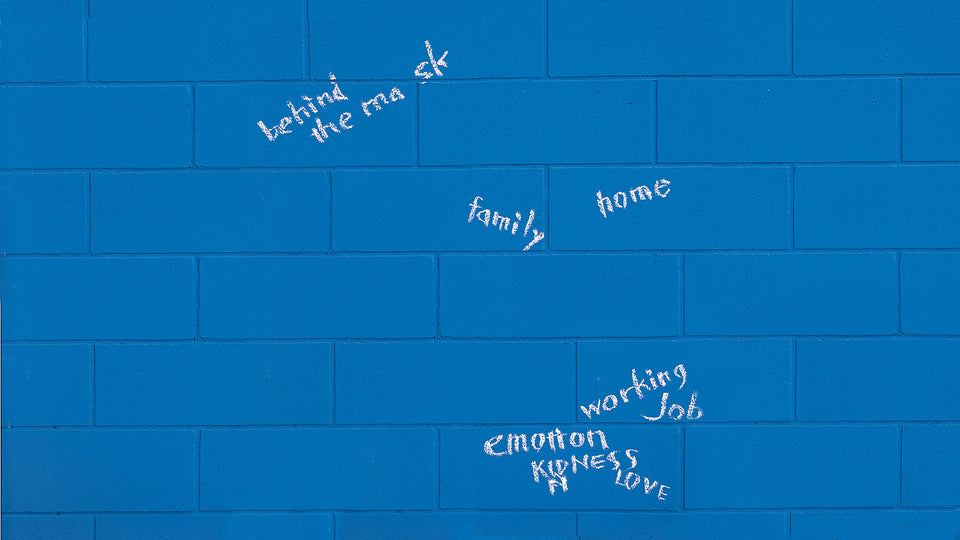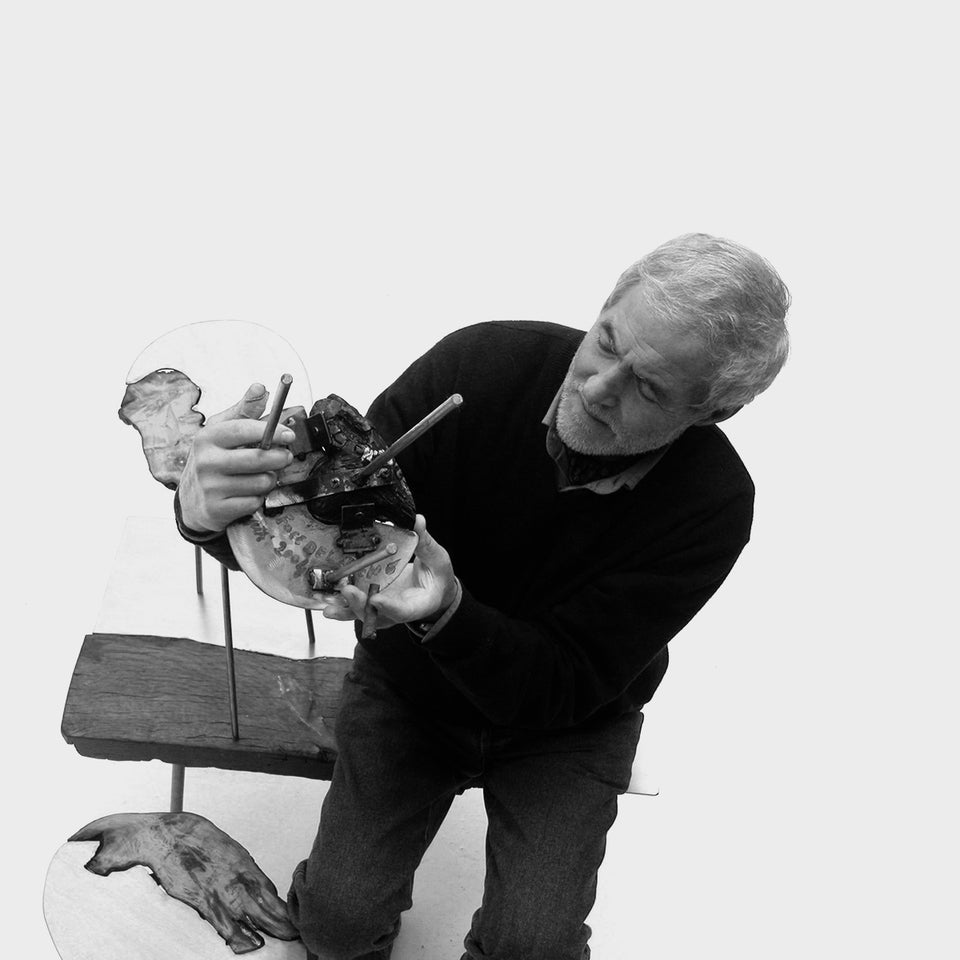RAFFAELLO BIAGETTI
Raffaello Biagetti was an eclectic and visionary figure, who started his figurative research in Santarcangelo di Romagna as a painter, which he’ll be until 1975.
In 1950, The Biagetti Family, (Raffaello Biagetti and his brothers Alvaro and Aldo) started working with furniture and design, becoming one of the first design dealers and collectors in Italy.
In 1968 Raffaello Biagetti moved to Ravenna, where he started to design and produce his collections. Since the beginning Biagetti’s family begun to build strong collaborations with Italian renowned design brands such as Cassina, B&B, Gavina, Saporiti, Poltrona Frau and Memphis, began a good relationship with the founders. Many of the pieces belonged to the Biagetti collection come from the archives of these companies.
In 1968 Raffaello Biagetti was entrusted with the task of managing the family furniture store in Ravenna. Thanks to this opportunity, he moved to Ravenna, and started to design his first collection of objects “Sine loco” in 1970 (which means “No place”), a collection of furnitures in pine wood with pure linear shapes, whose idea was to work as a primitive man who builds his own objects. This first experience led to a second collection in 1973, “Terrae” and “Arundine", a collection of apparently poor terracotta objects, with furnitures on bamboo rod, and in 1989 to “Iron and Fire” (“Ferro e Fuoco”) a collection of all-black furniture produced by the Milanese company Album.
In 1988 Raffaello Biagetti announced the opening of “Museo dell’Arredo Contemporaneo”, founded with the idea of telling the birth and the evolution of one of the most important cultural and social phenomena of the last Century: Design. The COLLECTION is a unique didactic instrument which sets out the history of furniture design from 1880 to 1980, starting from the Industrial Revolution. The names of the designers exhibited are numerous and exceptional: Art Nouveau is represented by the works of Charles Rennie Mackintosh, Antoni Gaudì and Gebrüder Thonet. Then comes the Viennese School of the 1900s with Josef Hoffmann followed by the Bauhaus, Gerrit Thomas Rietveld up to Frank Lloyd Wright. The 1950s are represented by Scandinavian, Italian and American designers such as Alvar Aalto, Charles and Ray Eames, Carlo Mollino, Carlo Scarpa, Luigi Caccia Dominioni and Gio Ponti. The Italy of the 1960s sees the dawn of the industrialisation of design and the so-called “Italian Style” of the Castiglioni brothers, Gae Aulenti, Alessandro Mendini and Ettore Sottsass, passing through the most controversial and irreverent forms of expression, typical of Radical Design, to arrive at the shocking works of Memphis and Alchimia.
Concurrently to this wide-ranging project, which has its climax with Futurarium school in 1995, in 1998 Raffaello Biagetti started to design and produce “Mostrilli”, a collection of tables made by unique pieces realized with antiques woods merged with hand-painted steel frames. The result was a theatrical dimension, with a unique expressivity, rich in charming and delicate allusions, now parts of important private collections.
In 2007 he designed his last collection for Memphis, produced by Memphis - Post Design in 2009, “Lamiere Crude” (Raw plates), a series of objects in leather and iron that provide an opening onto a very particular domestic scenario.
DESIGN CLUB
MUSEO DELL’ARREDO CONTEMPORANEO
The history begins in Ravenna in 1988, when “Museo dell’Arredo Contemporaneo” was created by Raffaello Biagetti, with the aim of representing the most crucial moments of the evolution of Italian and International industrial product design, highlighting nuances and contrasts through the different experiences that have generated contemporary design.
The black building, 9 meters high, hosted a collection of 300 pieces of furniture pieces and lamps, from the 1880 to the 1980; the selection was curated by Raffaello Biagetti, Giovanni Klaus Koenig and Giuseppe Chigiotti, professors at the University of Architecture in Florence, and by Filippo Alison, from the University of Architecture in Naples. The project was extremely innovative for its time, with the strong intention of taking the visitor on an imaginary voyage through the evolution of creativity applied to objects. The efforts of this core team were strengthened by the help and vision of great names such as Dino Gavina, Ettore Sottsass, Ignazio Gardella and many other authors, who contributed to the creation of a “theatrical museum” where every stage is a scene, a chapter in a book, able to generate a consistent and unbiased vision, chronological and accurate in its references to the most important protagonists of the sector. The original stage project was designed by Piero Castiglioni, who conceived a space all black, a stage where spotlights are focused on objects like actors and each selected piece is placed on a footboard according to Gae Aulenti’s directions. In the early ‘90s, Ettore Sottsass and Johanna Grawunder designed the Museum’s entrance pavilion, a building that hosts a mosaic of 45 square meters specially realized for Museo dell’Arredo Contemporaneo. Sottsass become a pivotal figure in the evolution of the Museum, since he started a continuous confrontation with authors and critics of that time, as Ignazio Gardella, Dino Gavina, Lisa Point, Gaetano Pesce, Ron Arad, and many other authors and design companies that thanks to their founders have contributed to the realization of a theatrical museum in which each stage is a scene, a chapter of a book capable of giving an homogeneous vision, chronological and precise on the main characters of the history.
“The enlargement project of the existing Museum took into account not only the quantitative needs but above all the location of the building in a countryside area that still maintains the greenery, special silences, distant horizons. For this reason we have tried to imagine, near the closed place, another open and organized place to be able to collect sensations and memories concerning the ancient place: we have designed a kind of cloister where you can walk and rest or reconstruct new concentrations.”. Ettore Sottsass
Between 1995 and 1996, the Museum became the venue for Futurarium School, an interdisciplinary experience with Ron Arad, Gaetano Pesce and Johanna Grawunder, along with great names of design fields who during summer stayed in Ravenna and work together with students and with local artisans to create piece of arts, now part of the collection.
The personality of Raffaello Biagetti pushed the boundaries of the city, which thanks to this has become internationally renowned. The collection was rediscovered and moved to Milan by Musei Italiani in 2015; the exhibition was presented on the occasion of Expo 2015 at Borsa Italiana’s headquarters “Palazzo Mezzanotte” located in Piazza degli Affari, Milan. In 2021 the collection was brought to the prestigious Tsinghua University Art Museum in Beijing.




